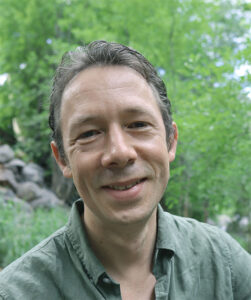The idea of contrast itself is expressed across all areas of art, design and architecture. For obvious reasons. But when it comes to my own life experiences, contrast seems to be quite different. When things come up that I dislike or do not want, it creates tension and upset. But maybe contrast is exactly what I am looking for.
The Unappealing Contrast
In art, contrast draws attention to a specific area of the overall composition. It illuminates difference and guides the observer towards what is a significant aspect of the overall story. Music without contrast would become boring. It breaks up the established cohesive structure to add some unexpectedness and excitement. How about writing, theatre and screen plays? What is a hero without a villain? Or even in the culinary field. Opposing flavors in cooking like sweet and sour just makes a dish more interesting and enjoyable.
But in my own life experiences, contrast is different. It does not carry quite the same appeal as it does in art.
Contrast is created when I see something change that is meaningful to me. I compare past and present and decide that I dislike the current situation. It then becomes the launchpad for the contrasting experience.
The interpretation of the experience gives rise to contrast, emotion and felt tension. The emotional intensity can range from unnoticeable to an unexpected “electric shock”.
Looking for Relief
A simple but very illustrative example is how I dealt with “headaches”.
A headache showed up out of nowhere. Yet it was unexpected it was something I was familiar with. I addressed them successfully with over-the-counter pain medication in the past. My obvious response was to take the meds.
Obviously, I want to address the situation with something that already showed success.
Following a familiar pattern is like an automatic response to move me back to a sense of balance and safety. However, already the conviction that it will work again can give some tension relief.
My obvious expectation after taking the medication was that the symptoms go away. But instead, they got worse. After increasing the dosage without success, I considered using a prescription drug. When I got the medication and looked up the potential side effects, I felt hesitant and wondered if there wasn’t a better way to handle it.
My need for control and certainty gets challenged when my automated response does not result in relief. The sense of urgency to find a new solution can cause increased tension. When I don’t have a solution, it’s like a “pause”. It is a time of inertia to re-orient myself. Outside of the familiar cycle of trigger and response, it provides me with the opportunity to increase my situational AWARENESS to expand my perspective.
In the end, I decided not to take the prescription drugs. By doing some research, I came across an on-line article that talked about how eye strain can cause headaches. I immediately resonated with the offered suggestions and applied some changes to my daily work routine by adding more frequent breaks when working on my laptop, as well as doing eye exercises. My headache got better and better – taking no medication.
Increasing Awareness
This is a simple example but carries a profound realization. When I experience a “pause”, a lack of fortification of a known rhythm, like the use of a functioning pain medication, the supportive movement has changed its direction.
To keep moving, adjustment is required. This change can only occur through an increased level of awareness, which enables the new reaction.
The symptom of headaches might return. If that is the case, the physical symptom could be the impetus for more profound insight, which can show itself in upcoming cycles. Thus, each cycle gives access to a different level of realization.
In one of the upcoming cycles, there might be no relief option in sight. It creates an “extended pause” or a sense of “feeling stuck”. All remaining tension rise then to the surface to allow not only for another relief but for a final release. (check out my blog: “From Repetition to Creativity”)
The Beauty of Contrast
My usual first reaction when something feels uncomfortable is, that I want to get away from it. But maybe I can push my tolerance limit just a little, so I can focus on DISCOVERY rather than trying to fix the situation.
By changing the focus from “pushing” away to “allowing” to be, I start to engage into my experience instead of resisting it and open myself to receive more insight. I can ask myself simple clarifying questions like “Why do I feel the need to change the situation?”. Those insights can disclose a lot about my interpretation of the experience.
At one point in the process, I might even realize that I can see beauty in contrast. Allowing it to be and observing it with no judgement opens up the realization for the tremendous benefits it can bring.
Contrast enables the emergence of a new reality. Something I truly desire. Therefore, the formerly unwanted tension turns into “creative tension”. The associated emotion triggers reflection and desire for DISCOVERY. Opening the path towards a new framework of Experience. Something that provides an increasing sense of creative freedom and ownership. A “Meta-Experience“.


